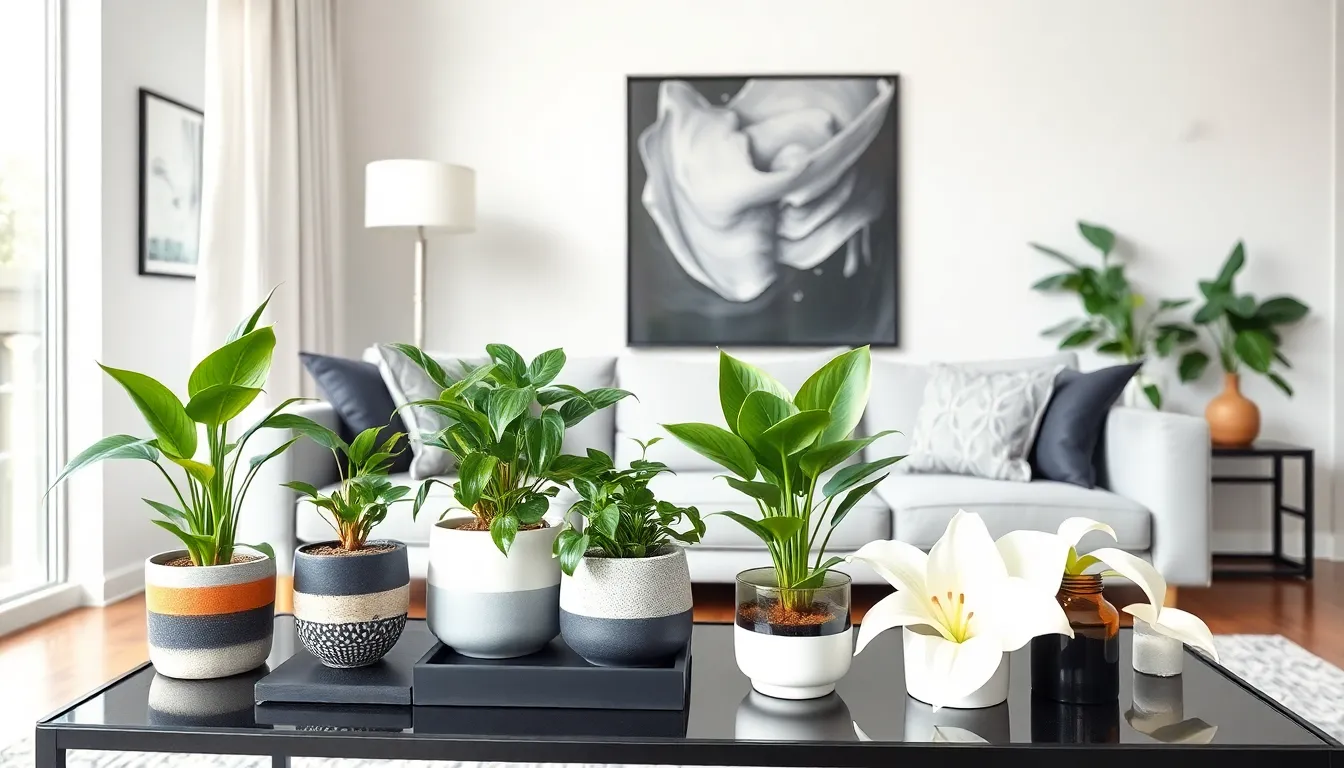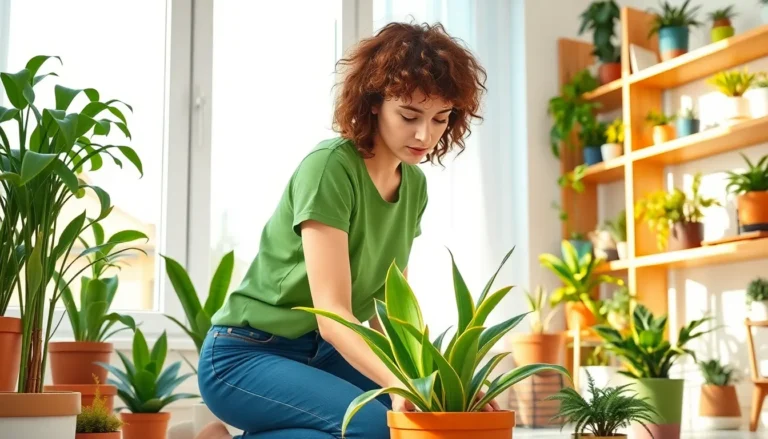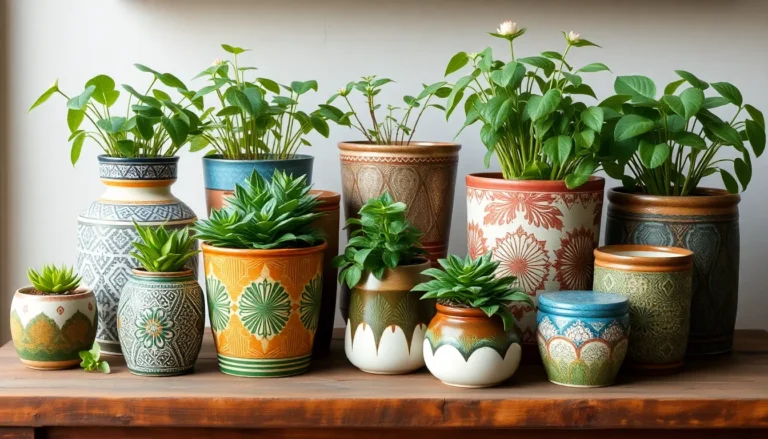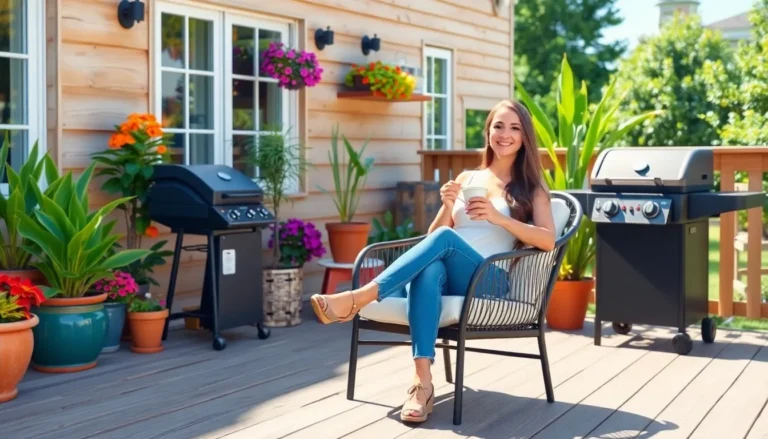Imagine walking into a room where every corner bursts with life, thanks to perfectly staged house plants. It’s like a botanical Instagram feed come to life, and who wouldn’t want that? Staging house plants isn’t just about adding greenery; it’s about creating an inviting atmosphere that makes guests feel like they’ve stepped into a cozy oasis.
With the right plants in the right spots, a space transforms from drab to fab faster than you can say “photosynthesis.” Whether you’re prepping for a big event or just want to impress your cat, staging can elevate your home’s aesthetic. So grab your watering can and let’s dive into the art of staging house plants, where every leaf has a story to tell and every pot is a potential conversation starter.
Table of Contents
ToggleBenefits Of Staging House Plants
Staging house plants offers numerous advantages that enhance living spaces. By strategically placing plants, individuals create visually appealing environments that elevate home decor.
Enhancing Aesthetics
Beautifully arranged plants add color and texture to any room. They create focal points that draw the eye and stimulate interest. Displaying varying sizes and types of plants creates depth and dimension. Consider incorporating vibrant flowers along with lush green foliage. Unique planters further enhance the aesthetic appeal while complementing existing decor styles. Transforming corners and shelves with plants generates a cozy atmosphere, making spaces feel more inviting and personalized.
Improving Air Quality
House plants play a crucial role in enhancing indoor air quality. Certain varieties, like peace lilies and snake plants, naturally filter toxins and improve air purity. According to NASA’s Clean Air Study, placing plants indoors can reduce pollutants by up to 87% within 24 hours. Plants also contribute to increased humidity, which can alleviate respiratory ailments and dry skin. By introducing house plants, individuals create a healthier living environment that supports overall well-being. Incorporating them into home staging not only beautifies spaces but also promotes healthier air.
Types Of House Plants For Staging

Selecting the right house plants boosts aesthetic appeal and creates a warm atmosphere. Various types thrive in different conditions, making it easy to find suitable options for any space.
Low-Light Options
Snake plants shine in low-light spaces, offering striking vertical foliage. Pothos thrives under similar conditions, with vibrant trailing vines that soften corners. ZZ plants tolerate low light and infrequent watering, making them ideal for busy homeowners. Peace lilies add elegance with their dark green leaves and white blooms, even in shaded areas. Focusing on these plants brings life to dimly lit rooms without compromising on style.
Hardy Varieties
Spider plants survive in a range of conditions, making them perfect for beginners. Rubber plants boast thick leaves, adding a bold touch while being resilient to neglect. Cast iron plants thrive in extreme conditions, easily adapting to various environments. Dracaenas provide diverse shapes and colors, enhancing staging options. Choosing hardy varieties ensures a vibrant look with minimal maintenance, ideal for those aiming to impress potential buyers.
Tips For Staging House Plants
Staging house plants effectively enhances visual appeal. Combinations of plant placement and varieties create engaging spaces.
Choosing The Right Location
Positioning plants in well-lit areas significantly boosts their visual impact. Use natural light to highlight vibrant colors. Avoid placing plants in direct sunlight, which can cause damage. Consider the room’s function when selecting locations; for example, kitchens benefit from herbs, while living areas thrive with larger foliage. Establish balance by distributing plant sizes across spaces.
Mixing Heights And Textures
Incorporating plants of varying heights adds dimension to any setup. Arrange tall plants, like fiddle leaf figs, alongside smaller options, such as succulents. Mixing textures also enhances the aesthetic; for instance, combine smooth-leaved plants with those featuring coarse or variegated foliage. Group different planters, like ceramic and woven varieties, to create visual interest. This combination elevates the design, making each plant a focal point within the space.
Common Mistakes To Avoid
Staging house plants can enhance visual appeal, but certain mistakes can detract from the overall effect. Understanding these pitfalls ensures a more successful plant display.
Overcrowding Plants
Overcrowding plants negatively impacts aesthetics and health. Limited space restricts airflow, leading to moisture retention, which can cause rot or pest infestations. Grouping plants too closely diminishes their unique characteristics, making them blend into a cluttered mess. Balance is critical; leaving adequate space between plants allows each one to shine and fosters a sense of harmony. Carefully consider the size and type of each plant when arranging, ensuring enough room for growth and maintenance. Spacing them appropriately maximizes visual impact while contributing to a vibrant atmosphere.
Neglecting Maintenance
Neglecting maintenance presents a common issue in plant staging. Ignoring care routines leads to wilting leaves and unsightly conditions, detracting from the intended aesthetic. Regular watering, fertilization, and pruning are essential for keeping plants healthy and vibrant. Establish a schedule that aligns with each plant’s specific needs, whether it be weekly checks for soil moisture or monthly fertilization. Additionally, removing dead leaves encourages new growth and enhances the visual appeal of staged plants. Prioritizing maintenance ensures that plants contribute positively to the space and remain an integral part of the overall decor.
Staging house plants can significantly elevate the ambiance of any space. By thoughtfully incorporating a variety of plants and planters, individuals can create a lively and inviting environment that reflects their personal style. The right placement not only enhances decor but also contributes to a healthier living space.
With careful consideration of light conditions and room functions, anyone can transform their home into a botanical haven. Avoiding common pitfalls like overcrowding ensures that each plant thrives while adding to the overall aesthetic. By embracing the art of staging house plants, it’s possible to cultivate a vibrant atmosphere that delights both residents and guests alike.






